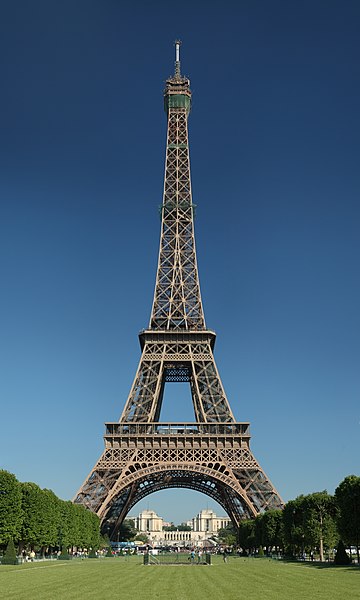The Eiffel Tower is a wrought-iron lattice tower on the Champ de Mars in Paris, France. It is named after the engineer Gustave Eiffel, whose company designed and built the tower from 1887 to 1889.
Seen from the Champ de Mars
First drawing of the Eiffel Tower by Maurice Koechlin including size comparison with other Parisian landmarks such as Notre Dame de Paris, the Statue of Liberty, and the Vendôme Column
A calligram by Guillaume Apollinaire
Foundations of the Eiffel Tower, photographed in 1887
A lattice tower or truss tower is a freestanding vertical framework tower. This construction is widely used in transmission towers carrying high voltage electric power lines, in radio masts and towers and in observation towers. Its advantage is good shear strength at a much lower weight than a tower of solid construction would have as well as lower wind resistance.
The Eiffel Tower, measuring 1,083 feet from base to tip, is perhaps the most famous example of a lattice tower. It was built in 1889, and was the tallest man-made structure in the world until 1930.
Tokyo Skytree, the tallest lattice tower in the world since its completion in 2012
The Tokyo Tower was the tallest lattice tower in the world for 16 years, from 1957 to 1973 and remains the tallest 4-sided lattice tower
The WITI TV Tower is the tallest lattice tower in the United States and the tallest 3-sided lattice tower in the world








